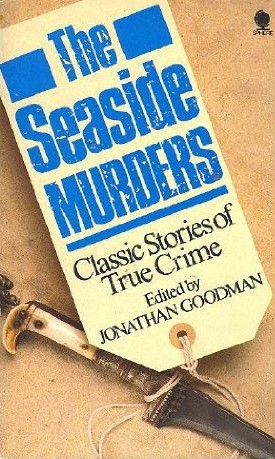Jonathan Goodman’s 1985 edited collection The Seaside Murders: Thirteen Classic True Crime Stories recounts a selection of murders connected to the British coast. Chronologically they run from anonymous contributions to the Newgate Calendar to the murder of Clive Olive at Shoreham Harbour in 1973, written by the pathologist who was involved with the case. In between, authors, including a verbose Edgar Wallace, write about crimes which thrilled and appalled the nineteenth- and twentieth-century public. Four of the chapters are written by Goodman himself.
All but two murders occurred in England, with Scotland and Ireland claiming one each, though as the Scottish entry recounts the fictional adventures of the Sawney Bean clan it probably doesn’t count. Most happened in the south-east, presumably a function of the popularity of its resorts rather than, one hopes, any inherent tendency to villainy in the region. Unfortunately, with only 180 pages for the 13, there is little opportunity to delve into the crimes in much depth.
Goodman exercises his predilection for puns in the title of his introduction, ‘Slaughtering Places’ (rather than watering places). However, he notes that despite the book’s theme, water plays a part in only two of the murders discussed, and adds that he has omitted the 1935 killing of Francis Rattenbury at Bournemouth as it has been well covered elsewhere. Those included range in terms of villainy from the likes of cold-blooded George Joseph Smith and his bath tubs to the pathetic Christiana Edmunds handing strychnine-laced chocolates around Brighton.
The seaside would seem to be a prime spot at which to commit murders, with its transient population of holiday makers, dangerous locales such as cliffs and slippery rocks that could provide cover for crime, decreased inhibitions and relaxation of vigilance, a degree of sexual licence and increased consumption of alcohol, not to mention the domestic bickering that often accompanies holidays. Fiction writers are aware of the opportunities it offers, but fortunately real-life murderers are thinner on the ground (and water).

